Read the full story of the tragic city fire that ripped through Ålesund in the winter of 1904, and the city's subsequent reconstruction that made it famous.
In stark contrast to other coastal Norwegian towns that are filled with white, dark red, and mustard yellow wooden buildings, the fairytale architecture of Ålesund has more in common with Paris, Prague and Brussels.
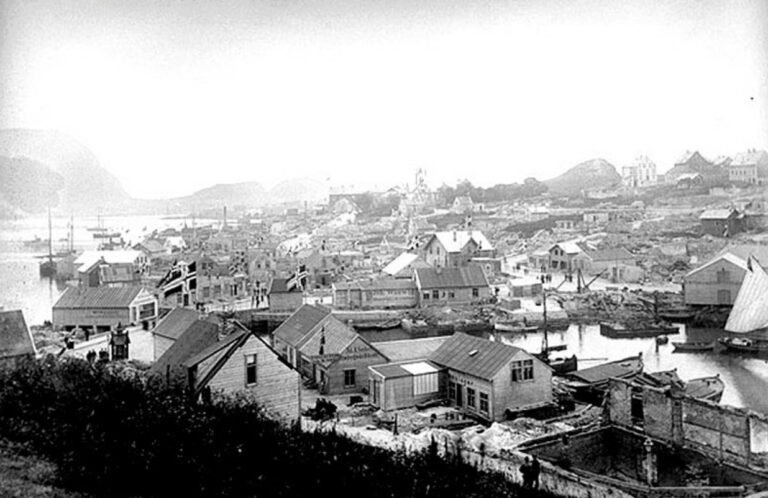
The dashing art nouveau influenced architecture means Ålesund is a city quite unlike any other in Norway. But the reason why the city looks the way it does today is a direct result of tragedy.
When a 1904 fire devastated the wooden city, young designers and German money came together to rebuild the city in the fashion of the time. More than 100 years later, the turrets and towers of Ålesund stand apart from the rest of Northern Europe as a shining example of the style.
Historians today generally accept that the city fire was positive in terms of city development. Nevertheless, it's important to remember that the fire destroyed the lives of thousands of people at the time.
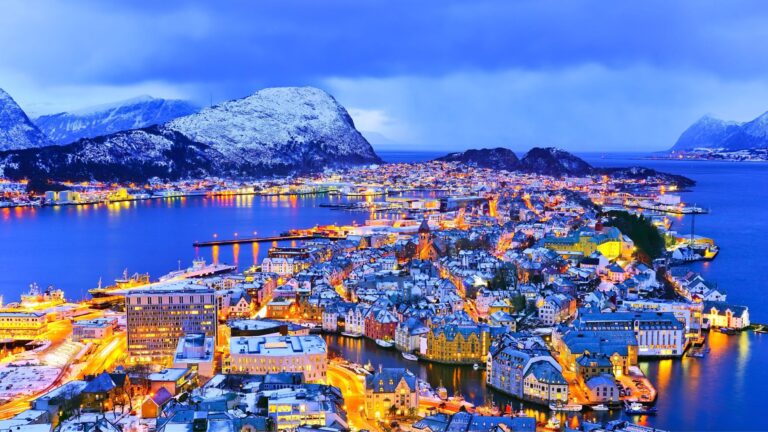
I've mentioned the fire a lot when referencing Ålesund, but today it's time to take a deeper dive into the story.
Ålesund in 1904
At the turn of the century, trade was more important to Norwegian coastal life than ever before. Ålesund had emerged as a key regional trading centre and as a result had grown quickly.
Rapid population growth required rapid construction of housing. Simple wooden buildings were built in great numbers to house the some 10,000 people who worked in the area.
There was nothing unusual about this as many small Norwegian towns used wood for their buildings at the time. But the construction of so many wooden houses so close together turned out to be one of the major contributors to what would happen next.
The night of the fire
At around 2am on 23 January, 1904, Ålesund was suffering from a winter storm with strong winds raging across the city. A small fire broke out in the factory of Aalesund Preserving Co., possibly because an animal knocked over a lit torch.
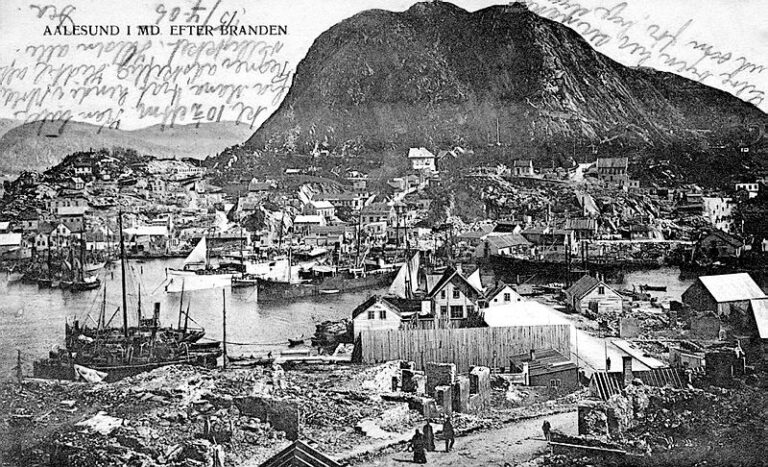
Within about 15 minutes of the fire starting, the fire watchtower observed an open fire and two alarms were received from manual pull stations. Crews were dispatched but by the time they arrived, the factory building was fully ablaze and the streets were filled with smoke.
Firefighters struggled to keep pace with the development of the fire. With so much wood available as fuel and the wind helping the flames jump between buildings, the fire quickly took hold.
Despite firefighters attempting to hold the fire line several times, high winds blew sparks onto other buildings. The focus turned to evacuation, with thousands of people forced to flee their homes, many on foot with only what they could carry.
Within hours, the fire had destroyed the majority of buildings between where Nedre Strandgate 39 and Borgundvegen 37 stand today. In total, the fire destroyed nearly 850 houses. Only about 230 buildings remained within the town.
One remarkable fact about the fire is the number of fatalities. Despite the high number of houses destroyed, only one person is said to have died.
Rebuilding the city
With much of the wooden city left in ruins, outside help was desperately needed to rebuild Ålesund. Much of that help came from abroad, especially from Germany. That's because Kaiser Wilhelm of Germany often vacationed in Ålesund and was a big fan of the area.
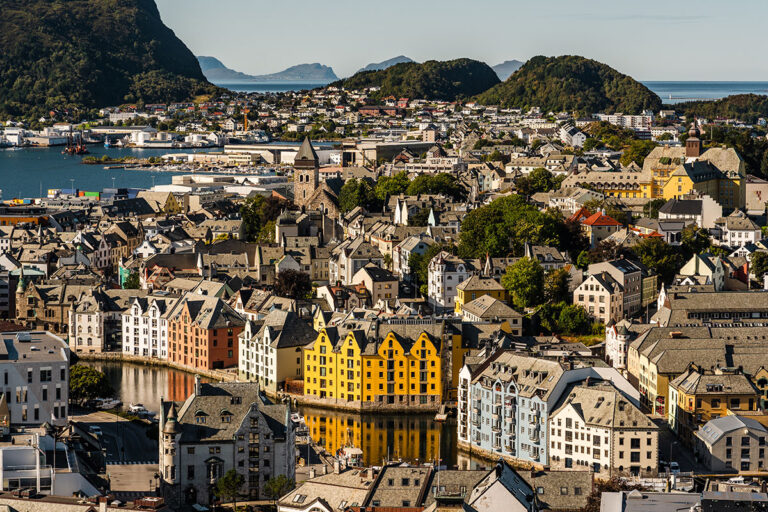
He was so shocked to hear of the news that he sent four ships with people and materials to help in the rebuilding efforts.
Local Norwegian designers and architects were inspired by the art nouveau style popular in Germany and across Europe at the time, so they set about building a city in that image.
Visiting Ålesund
While a walk though the city centre and along the waterfront today drips with history, the style was contemporary at the time. Today, the town's architecture and spectacular natural setting have made Ålesund a popular tourist attraction.
One of the best places to appreciate both is from the Aksla viewpoint. A popular way to reach the viewpoint is to take the 400+ steps up from the city park.
Although the city is an art nouveau museum in itself, Jugendstilsenteret (the Art Nouveau Centre) tells the story behind the city’s renaissance from the devastating fire through a 15-minute multimedia experience. Textiles and furniture from the era are also on display.
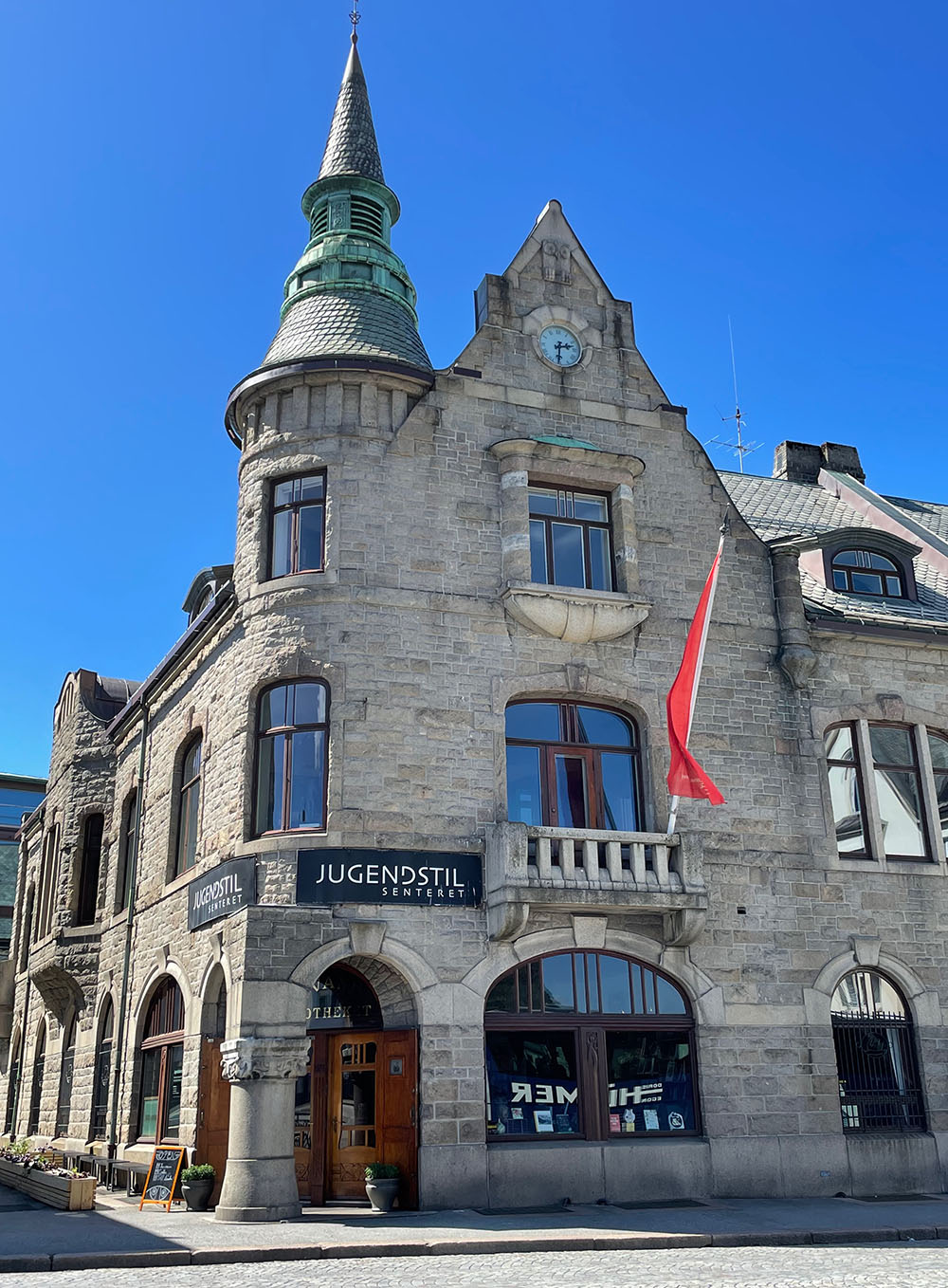
It's well worth the NOK 110 admission fee, especially as the ticket also gains you admission to the neighbouring art museum.
The museum is housed inside one of the city’s finest examples of the architecture, with a pristine exterior overlooking a cobbled street and the city’s canal. The reception area retains the original fittings from the building’s former use as a pharmacy.



Was there significant participation from Brussels, France, or England involved in Alesund’s design or reconstruction? Who were the Norwegian Architects and where were they trained and inspired? Is their company still in existence?
My point is: the actual designers and builders are seldom acknowledged, but the authors, publishers and artists are always given full recognition.
My grandfather was from Ålesund. He was a writer and also wrote the book “ Byen Brenner” , or, The City on Fire!
Still have a copy of the book.
I give tours of Waldehuset in Ålesund, (page 36 of your grandfather’s book) Today a 94 year old lady came for a visit. She tried to sign a local song, that was written commemorating the fire, but only remembered the melody and a few lines of the song. Do you happen to have any more information about that commemorative song, or another song that she tried to remember about Keiser Wilhelm II, and his help rebuilding Ålesund ?
What is a ‘manual pull station’? (‘Within about 15 minutes of the fire starting, the fire watchtower observed an open fire and two alarms were received from manual pull stations.’)
I’m lucky to have a grandfather that grew up in the most beautiful city called Ålesund. He also wrote the book “Byen Brenner” (City on Fire), about the 1904 fire.
His name was Reinert Torgeirson.
In about 1975, aged 9, at the house where I grew up in England, I found a framed panoramic set of 3 photographs of somewhere with mountains, sea and a massive town rebuilding project and the text ‘Aalsund 1-2-1904’. I searched every atlas and encyclopedia in our local library (no internet then!) but could find nowhere called Aalsund. A couple of years later, a further search found ‘Aalsund (Alesund)’ and from there it was easy! I found a bit of information in an encyclopedia and then wrote to the Norwegian Embassy in London with a sketch of the image to ask more about the fire. They sent me some information and suggested I make a copy of the photo to send to the museum at Alesund – which I did, and I had a lovely letter back in return. Intend to visit, one day!